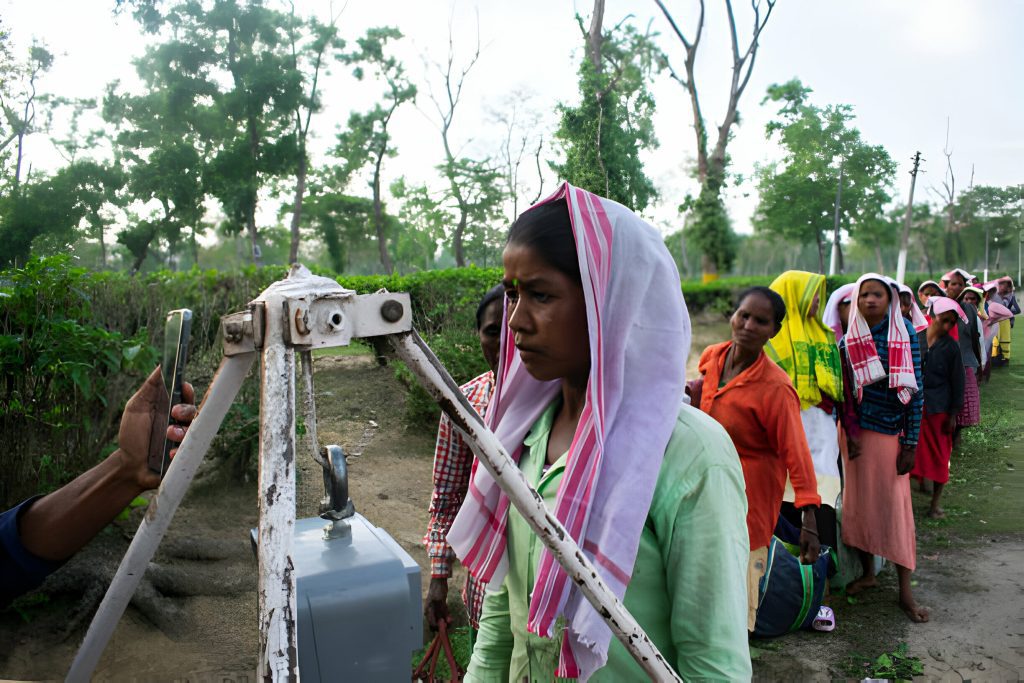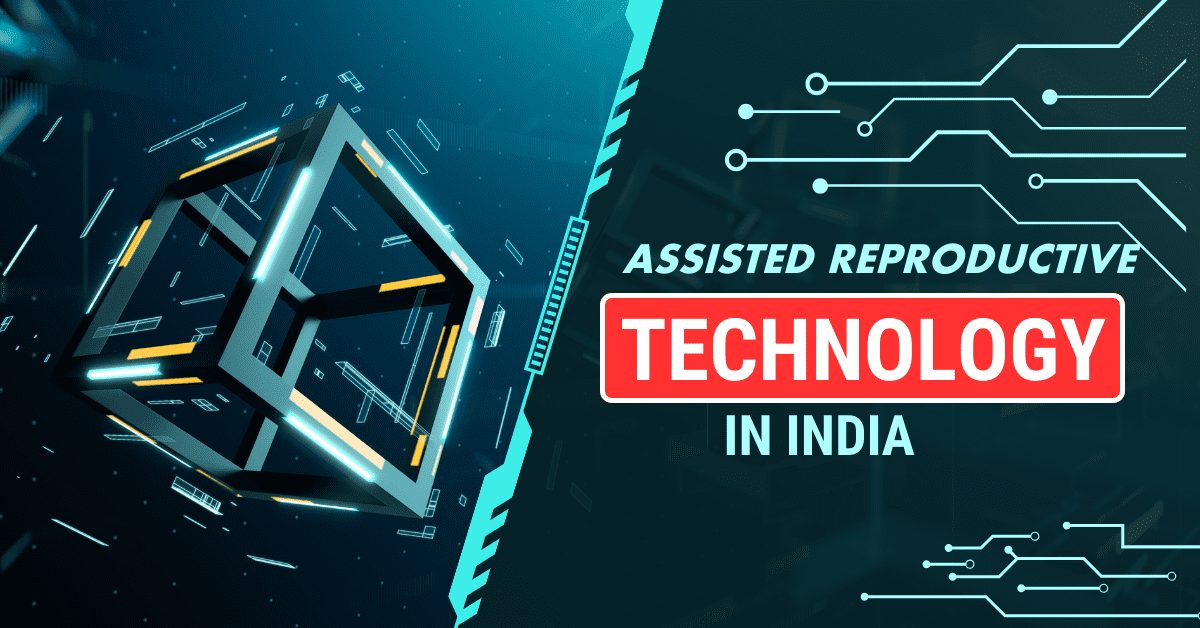
In the fast-evolving landscape of medical science, Assisted Reproductive Technology (ART) has emerged as a beacon of hope for individuals and couples facing fertility challenges.
This article delves into the fascinating realm of assisted reproductive technology in India, exploring its growth, regulations, and the transformative impact it has on countless lives.
Assisted Reproductive Technology (ART) has witnessed a remarkable journey in India, transforming the lives of countless individuals and families. From its early beginnings to the present day, the history of ART in India reflects not only scientific advancements but also the evolving societal perspectives on infertility and reproductive health. [Assisted reproductive technology in India.]
History of Assisted Reproductive Technology in India
Early Beginnings of ART in India
In the late 20th century, India witnessed a groundbreaking moment with the birth of the first “test-tube baby.” The successful In Vitro Fertilization (IVF) procedure in 1986 marked the advent of ART in the country. Dr. Subhash Mukhopadhyay and Dr. Indira Hinduja were pioneers who played a pivotal role in this historic achievement. [Assisted reproductive technology in India.]
Evolution of Assisted Reproductive Technology
Over the years, ART in India has evolved significantly. Technological advancements, such as Intracytoplasmic Sperm Injection (ICSI) and Preimplantation Genetic Diagnosis (PGD), have expanded the scope of fertility treatments. The development of more sophisticated and less invasive procedures has increased the success rates of ART. [Assisted reproductive technology in India.]
Legal Landscape of ART in India
ART’s journey in India has not been without its share of legal considerations. Initially, a lack of comprehensive regulations led to ethical concerns. However, the government has since introduced legislation to monitor and regulate ART practices, emphasizing the importance of ethical and responsible reproductive healthcare.
Challenges and Controversies
While the progress in ART is commendable, it has not been without challenges. Ethical concerns surrounding practices like surrogacy and gender selection have sparked controversies. Additionally, societal and cultural challenges, coupled with misconceptions about ART, continue to exist.
Success Stories
Despite the challenges, numerous success stories highlight the positive impact of ART. Families struggling with infertility have found hope and joy through successful ART treatments, contributing to a shift in the narrative surrounding reproductive health. [Assisted reproductive technology in India.]
Changing Societal Perspectives
The societal perspective towards infertility and ART has undergone a significant transformation. There is a growing awareness and acceptance of assisted reproductive techniques, reducing stigma and fostering a more supportive environment for those seeking fertility treatments.
Technological Innovations in ART

Technological innovations continue to drive progress in ART. Breakthroughs in reproductive technology, such as the use of artificial intelligence in embryo selection, showcase the potential for further advancements in the field. [Assisted reproductive technology in India.]
Government Initiatives and Support
Recognizing the importance of reproductive healthcare, the Indian government has implemented initiatives to make ART more accessible and affordable. This includes the provision of financial support for couples seeking fertility treatments. [Assisted reproductive technology in India.]
Impact on Demographics
The widespread use of ART has not only contributed to increased birth rates but has also influenced the demographic landscape. Analyzing the statistical impact of ART on birth rates provides insights into the societal implications of these advancements. [Assisted reproductive technology in India.]
International Collaborations and Research
India has become a significant player in global ART research. Collaborations with international organizations and participation in cutting-edge research projects highlight the country’s contributions to the ongoing development of reproductive technologies. [Assisted reproductive technology in India.]
Personal Experiences and Testimonials
Real-life stories of individuals and families who have undergone ART treatments offer a glimpse into the emotional and psychological aspects of the journey. These narratives shed light on the resilience and determination of those seeking to build families through assisted reproductive methods.
Educational Initiatives
Educating the public about ART is crucial in dispelling myths and fostering understanding. Medical institutions and non-governmental organizations (NGOs) have taken up the responsibility of spreading awareness about reproductive health and available fertility treatments. [Assisted reproductive technology in India.]
Future Trends and Predictions
Looking ahead, the future of ART in India holds exciting possibilities. Anticipated advancements in technology, coupled with changing societal attitudes, are likely to shape the landscape of reproductive healthcare in the years to come. [Assisted reproductive technology in India.]
Conclusion
The history of Assisted Reproductive Technology in India is a testament to the remarkable progress made in the field of reproductive healthcare. From early breakthroughs to current innovations, ART has played a vital role in addressing infertility challenges and reshaping societal perspectives.
As India continues to embrace technological advancements and regulatory measures, the future of ART holds promise for further positive transformations.
Assisted Reproductive Technology Regulations: Navigating the Landscape
Embarking on the journey of parenthood is a significant life decision, and for some, Assisted Reproductive Technology (ART) becomes a beacon of hope. However, the ethical and legal dimensions surrounding ART procedures are complex and require a comprehensive understanding. This article aims to unravel the web of assisted reproductive technology regulations, shedding light on the frameworks that govern this transformative field. [Assisted reproductive technology in India.]
Defining Assisted Reproductive Technology
A. What is ART?
- Overview of ART
- A brief introduction to Assisted Reproductive Technology and its role in fertility treatments.
- Types of ART Procedures
- Exploring the various techniques encompassed by ART, such as In Vitro Fertilization (IVF) and surrogacy.
The Need for Regulations
A. Historical Perspective
- Early Days of ART
- Tracing the origins of ART and the emergence of regulatory concerns.
- Global Regulatory Trends
- Examining how other countries have approached and implemented ART regulations.
Regulatory Frameworks Around the World
A. Varied Approaches
- European Regulations
- Investigating the stringent regulations in European countries regarding ART procedures.
- Regulations in the United States
- Understanding the diverse regulatory landscape across different states.
Assisted Reproductive Technology Regulations in India
A. Legal Landscape
- Overview of Indian Regulations
- Delving into the existing legal framework governing ART in India.
- The ART Bill
- Analyzing the proposed ART Bill and its potential impact on the industry.
Ethical Considerations
A. Balancing Innovation and Responsibility
- Selective Reduction Dilemma
- Addressing ethical concerns related to selective reduction in multiple pregnancies.
- Surrogacy and Commercialization
- Exploring the ethical implications of commercial surrogacy and its regulation.
Challenges in Implementing Regulations
A. Socio-cultural Factors
- Societal Perceptions
- Examining how cultural attitudes impact the acceptance and implementation of regulations.
- Accessibility and Affordability
- Discussing the challenges in making ART services accessible and affordable for all.
Future Perspectives
A. Technological Advancements
- Genetic Editing and ART
- Considering the ethical and regulatory challenges posed by advancements like genetic editing.
- International Collaborations
- Exploring the potential for global collaborations in shaping and refining ART regulations.
The Assisted Reproductive Technology (Regulation) Rules
Assisted Reproductive Technology (ART) regulations form the backbone of ethical and legal considerations in the realm of fertility treatments. [Assisted reproductive technology in India.]
These rules aim to ensure the responsible and transparent practice of various ART procedures, such as in vitro fertilization (IVF) and surrogacy. Typically, these regulations encompass guidelines on the eligibility of individuals seeking ART, the documentation required, and the responsibilities of fertility clinics.
They often address issues like the maximum number of embryos that can be implanted, the prohibition of sex selection, and the rights and obligations of surrogate mothers.
By navigating and adhering to these regulations, the ART industry strives to maintain a balance between technological advancements and ethical considerations, fostering a secure environment for individuals embarking on the journey of assisted reproduction. [Assisted reproductive technology in India.]
Assisted Reproductive Technology ACT India
The Assisted Reproductive Technology (ART) Act in India is a pivotal legal framework designed to regulate the diverse landscape of fertility treatments. [Assisted reproductive technology in India.]
Enacted to address the growing importance of assisted reproductive techniques, the ART Act outlines guidelines and safeguards for both healthcare providers and individuals seeking fertility assistance.
This comprehensive legislation covers a range of aspects, including the eligibility criteria for those undergoing ART procedures, the establishment and functioning of fertility clinics, and the ethical considerations surrounding assisted reproduction. [Assisted reproductive technology in India.]
By delineating the rights and responsibilities of all parties involved, the ART Act aims to ensure the ethical and transparent practice of assisted reproductive technology in India, fostering a supportive and regulated environment for individuals navigating the complexities of fertility treatments.
Conclusion
In conclusion, navigating the landscape of assisted reproductive technology regulations is a delicate dance between innovation and responsibility. As society grapples with the ethical implications of these transformative procedures, a robust regulatory framework becomes crucial in ensuring the well-being of all parties involved. [Assisted reproductive technology in India.]
FAQs
- How do regulations vary across different ART procedures?
- Regulations can differ based on the specific ART technique, and understanding these nuances is crucial for those seeking fertility treatments.
- Is surrogacy legal in all states of India?
- While surrogacy is legal in India, certain states may have additional regulations or restrictions.
- What is the significance of the proposed ART Bill in India?
- The ART Bill aims to provide a comprehensive legal framework for ART procedures, addressing gaps in the current regulations.
- Are there any age restrictions for individuals seeking ART treatments?
- Age restrictions may vary for different ART procedures, and consulting with a medical professional is essential.
- How can individuals stay informed about the changing landscape of ART regulations?
- Keeping abreast of updates from official health and legal authorities is crucial, as regulations may evolve.
FAQs
- Is ART covered by insurance in India?
- While some insurance plans may cover certain aspects of fertility treatments, comprehensive coverage is often limited.
- Are there age restrictions for individuals seeking ART procedures?
- The eligibility criteria for ART vary, and age restrictions may apply based on the specific procedure.
- How successful are ART procedures in India?
- Success rates depend on various factors, including the age and health of the individuals involved.
- What is the current status of the ART Bill in India?
- The ART Bill is under consideration, and updates on its progress can be monitored through official channels.
- Are there support services for individuals undergoing ART treatments?
- Many fertility clinics provide counseling and support services to individuals and couples navigating the emotional aspects of fertility treatments.

I’m based in the USA, Canada, Australia, and the UK—four vibrant countries with rich educational landscapes and diverse news ecosystems.
Feel free to adjust and personalize this introduction to reflect your unique voice and experiences. Happy writing! 📝✨

